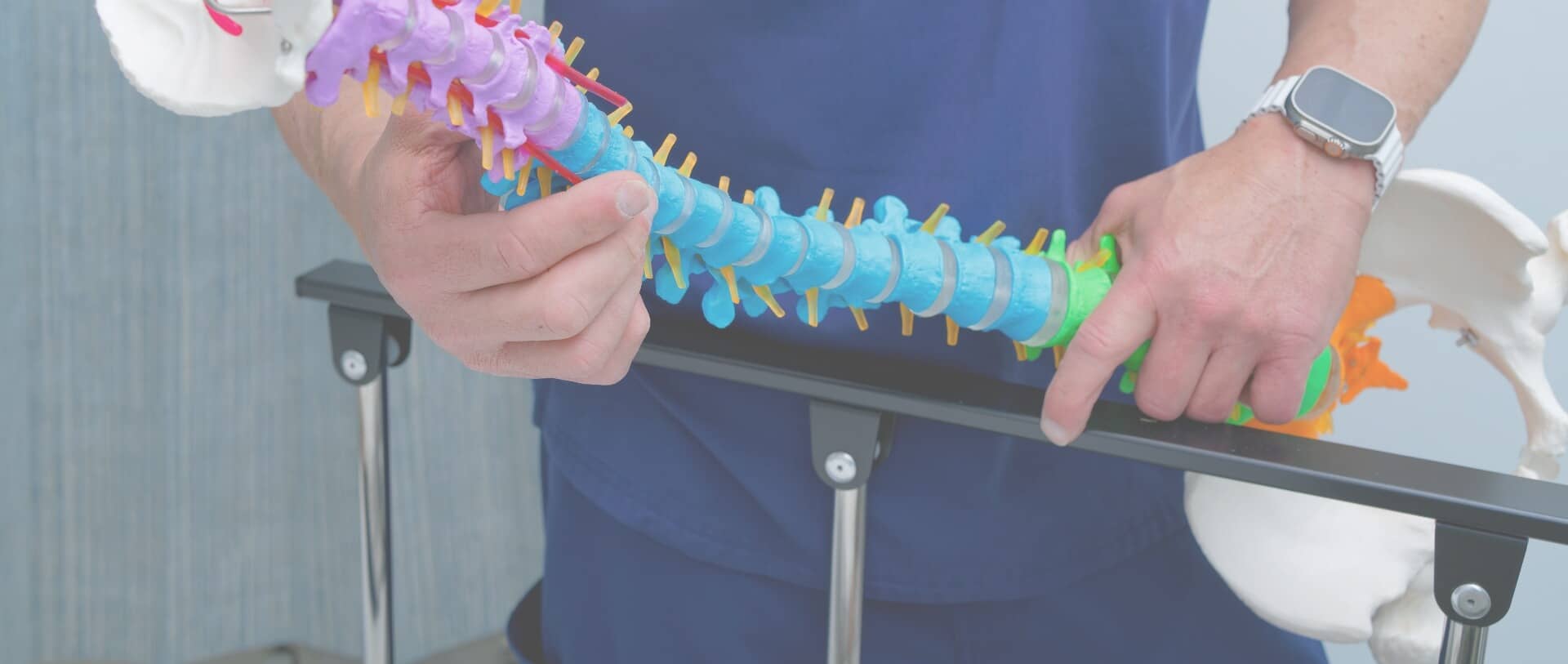
CONDITIONS
Spinal Stenosis
As you age, certain things may become unavoidable, but back pain doesn’t have to be one of them. Spinal stenosis is a condition that commonly occurs with age as a result of wear and tear on the vertebrae in your spine. However, suffering is not your only option when these conditions arise, thanks to innovative cervical spinal stenosis treatment and lumber spinal stenosis treatment provided by Gottlieb Spine. We are conveniently located in Irving. Contact us today to schedule an appointment.
What is Spinal Stenosis?
Spinal stenosis occurs when the space within your spinal column narrows, leaving less room for your spinal cord and surrounding nerves. This can result in pinching or irritation of these vital structures. As stenosis typically develops gradually over time, it is most commonly seen in individuals over the age of 50.
Unlike other spinal ailments, cervical stenosis involves damage or degeneration on the inside of the spinal canal. You may feel more severe pain or wider-ranging symptoms from stenosis as compared to a more common, like a pinched nerve.
What are the Symptoms of Spinal Stenosis?
Spinal stenosis can occur anywhere along your spinal column, but the most common areas for the condition are your neck and lower back. When your lower back is affected, it’s called lumbar stenosis. For your neck, it’s called cervical spinal stenosis. Common symptoms of lumbar spinal stenosis include:
- Lower back pain
- Tingling or numbness in your legs or feet
- Discomfort in one or both legs, particularly when standing for long periods
- Weakness in one leg
- Sciatica
You may be suffering from cervical stenosis if you have symptoms that include:
- Neck pain
- Tingling or numbness in your arms, hands, legs, or feet
- Weakness in an upper or lower limb
- Problems with balance
The pain of spinal stenosis is sometimes described as burning, stabbing, or shooting. It may worsen with walking, standing, bending, or twisting. Symptoms may come and go. In severe cases, sexual function may be affected, and you may experience a loss of bladder or bowel control.
What Causes Spinal Stenosis?
The symptoms of stenosis result from the compression and narrowing of the spinal cord in the lower back. This compression is primarily caused by the natural aging process and years of wear and tear on the lower back. Additionally, the development of spinal stenosis can be influenced by various factors including:
- Herniated disc
- Bone spurs
- Thickening of ligaments
- Nerve inflammation
- Arthritis
- Tumors
Some individuals may suffer from congenital spinal stenosis, in which the spinal canal is naturally restricted since birth. Additionally, prior surgical procedures or spinal injuries can also contribute to the onset of this condition.
How is Spinal Stenosis Treated?
Initial cervical spinal stenosis treatment will typically involve non-surgical methods. Dr. Gottlieb may recommend:
- Engaging in exercises or physical therapy to strengthen the muscles in your abdomen and back
- Participating in low-impact aerobics, like swimming or using an exercise bike
- Applying heat or ice
- Taking over-the-counter pain relievers
- Receiving numbing injections
Should your symptoms persist or significantly impact your quality of life despite these conservative measures, cervical stenosis surgery or lumbar stenosis surgery may be considered as the next step.
Will I Need Stenosis Surgery?
The need for surgery as cervical stenosis treatment depends on several factors, including the severity of your symptoms, the extent of the spinal canal narrowing, your overall health, and your body’s response to conservative treatment.
Ultimately, spine surgery is considered when spinal stenosis is causing severe and debilitating symptoms that are impacting your quality of life. At Gottlieb Spine, you will meet with an expert spine surgeon who can evaluate your condition and provide guidance on the most appropriate treatment plan for you.
What are the Different Types of Spinal Stenosis Surgery?
Spinal stenosis surgery can be categorized into two main types, depending on the location of the stenosis: lumbar and cervical.
Lumbar Spinal Stenosis Surgery
- Laminectomy: A type of decompression surgery, your surgeon will remove the lamina and any other structures that are compressing the spinal cord or nerves. This helps to relieve pressure and create more space within the spinal canal.
- Foraminotomy: This lumbar spinal stenosis surgery aims to widen the foramen, which are small openings through which spinal nerves exit the spinal canal to relieve nerve compression.
- Spinal fusion: In some cases of spinal stenosis, if there is instability in the spine, a spinal fusion may be performed in addition to decompression surgery. This involves fusing two or more vertebrae.
Cervical Spine Stenosis Surgery
- Anterior cervical discectomy and fusion (ACDF): A common cervical spinal stenosis surgery performed by Dr. Gottlieb, ACDF surgery involves removing a damaged disc and fusing the adjacent vertebrae. This helps to stabilize the spine and relieve pressure on the spinal cord and nerves.
- Artificial disc replacement: Instead of a fusion, an artificial disc is sometimes inserted between affected vertebrae to maintain the motion of the spine at that level while addressing spinal stenosis.
No matter the region of the spine being operated on, the goal of stenosis surgery is to remove bony growths or portions of bone protruding into the spinal canal and leaving less room for your spinal cord and nerves.

Top Quality Care at Gottlieb Spine
While aging may bring about various challenges, living with back pain doesn’t have to be one of them. At Gottlieb Spine, we understand the impact spinal stenosis and other spine conditions have on your life, especially as they become more prevalent with age. Our innovative cervical spinal stenosis treatment and lumbar spinal stenosis treatment options are designed to provide relief and improve your quality of life. With convenient locations in Texas, our dedicated team is here to guide you on your journey to a pain-free future and optimal health. Schedule an appointment today.
SCHEDULE A CONSULTATION